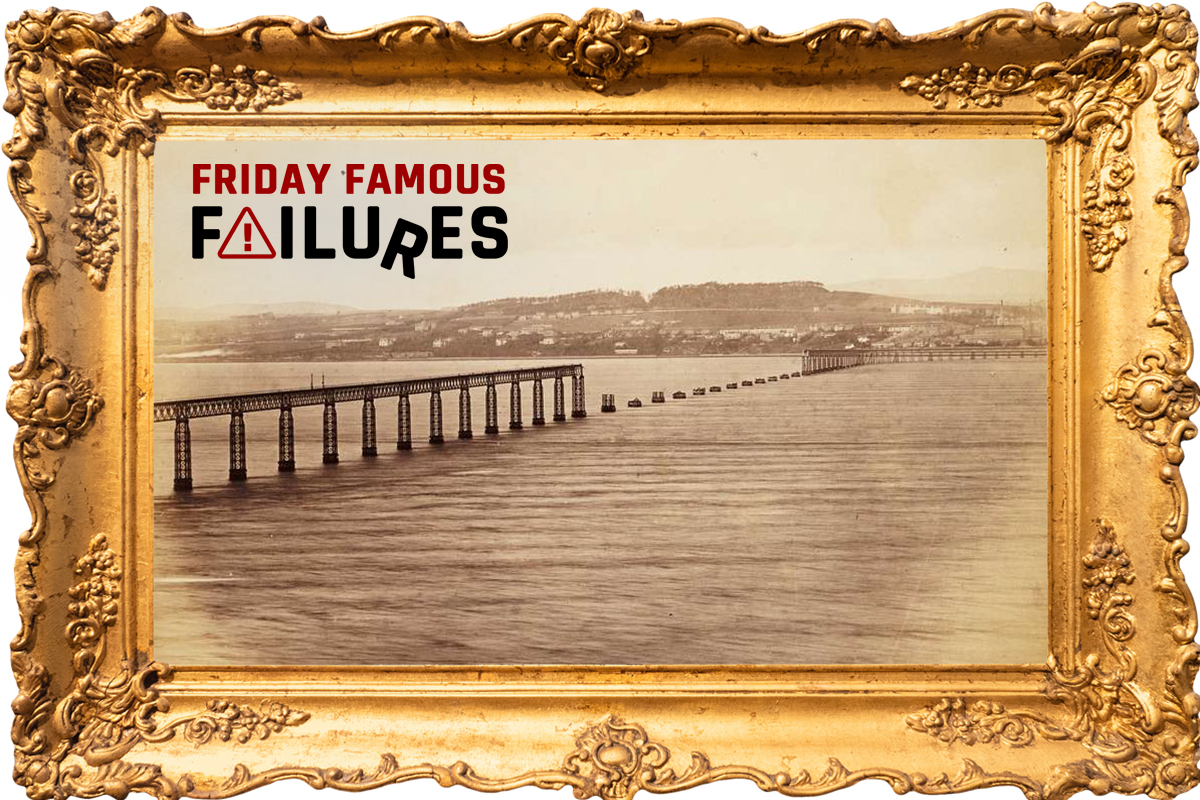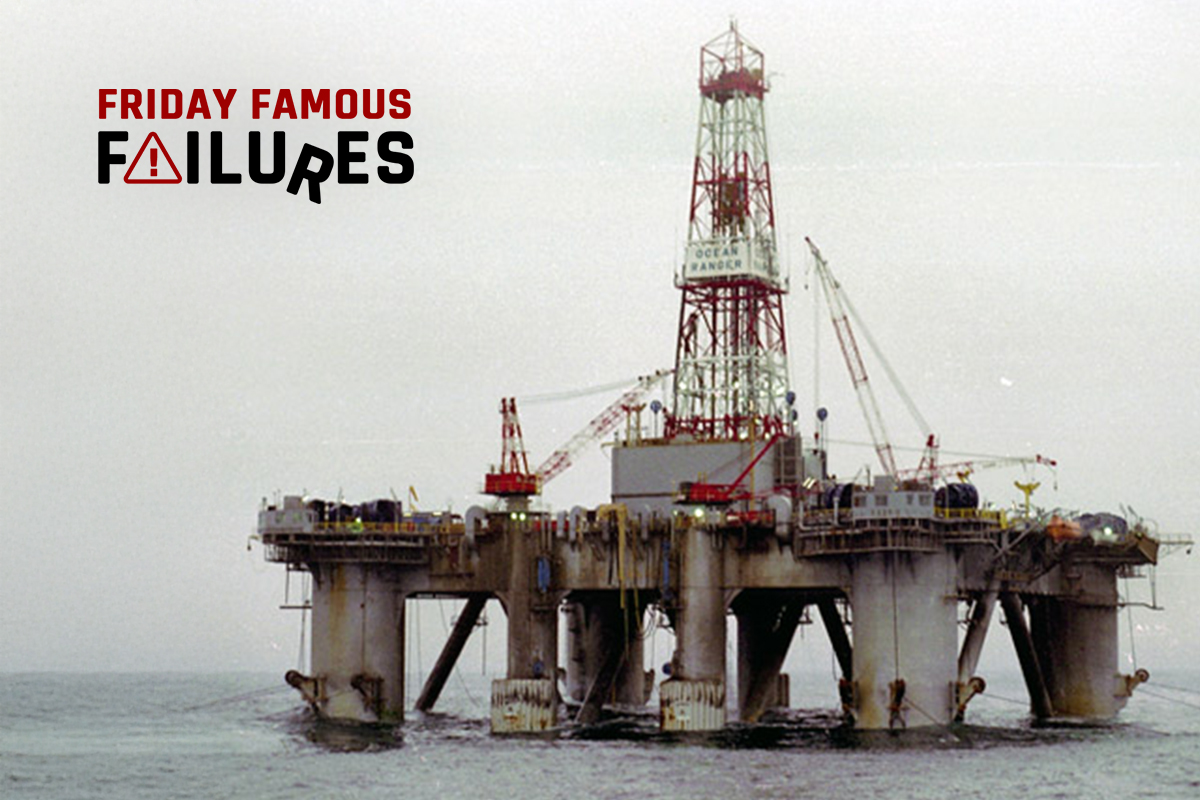A PEPCON employee was on the loading dock on May 4, 1988 when a thick cloud began moving through the facility. There were no flames in sight, but a sudden explosion rocked the plant. Then, a second explosion sent a shock wave across the terrain and Boulder Highway was reduced to a war zone. There was glass everywhere. Very few people got out.
A mile away, an engineering crew had been performing routine maintenance on a television tower on Black Mountain when they spotted the fire and began filming. About four minutes after the first major explosion, the engineers watched in awe as the PEPCON site completely disappeared in a spectacular burst of energy that dwarfed the initial blast.
Their vantage point afforded them a perfect view of the compression wave as it recklessly radiated across the desert, mowing down brush and demolishing a marshmallow factory that was adjacent to PEPCON (Pacific Engineering and Production Company, owned by American Pacific Corporation). Due to the distance, the sound of the blast didn’t reach them for several seconds, but when it did, it was thunderous.
The blasts were felt in high-rise buildings 11 miles away in downtown Las Vegas. Smoke from the fire rose thousands of feet into the air and was visible from 100 miles away. Football-sized burning shrapnel fell from the sky and the airborne debris ignited small fires.
The May 4, 1988 inferno and series of seven explosions ruptured a natural gas line that ran directly underneath the facility, escalating the magnitude of the catastrophe. The destructive energy from the larger explosion was roughly equivalent to 1,000 tons of TNT, or one kiloton. It caused seismograph needles to dance as far away as Colorado. Two of the manmade “earthquakes” that resulted measured 3.0 and 3.5 on the Richter scale. The blasts left a crater that was 15 feet wide and 200 feet long.
Two of PEPCON’s 77 employees died in the disaster and 300 others were injured. Fifteen firefighters were injured — eight from flying broken glass and seven from respiratory problems.
Five thousand property damage claims were filed with the U.S. government and final damage estimates ranged from over $70 million to $100 million. In 1988, it was estimated that $15-20 million would be required to rebuild the plant, excluding property acquisition costs.
The Cause of the PEPCON Disaster
What no one knew at the time of the explosions was that sparks from a welder’s torch used during routine maintenance at PEPCON had ignited a fire in the batch dryer building. The fire quickly spread to the 8.5 million pounds of finished ammonium perchlorate (AP) that was stored on the company’s grounds. PEPCON was one of only two companies in the U.S. that manufactured rocket fuel for the space shuttle program and for military missiles.
AP is a white or colorless, odorless crystalline material. While AP is primarily used as the oxidizer for solid phase rocket fuel, it has many other applications, including a component for explosives and fireworks, the oxidizer for air bag propellants, and components of adhesives and various oxygen-generating devices.
Contributors to the PEPCON Disaster
Numerous factors have been identified as contributors to the disaster and it is said that proper design, procedures and management practices would have prevented the catastrophe.
-
- After the Space Shuttle Challenger exploded on January 28, 1986, NASA suspended shuttle launches for over two-and-one-half years but it did not suspend its contracts for the production of AP. PEPCON continued full production of the chemical and stored the product on its property. Consequently, the containers full of the unused fuel component had slowly accumulated, making the site pregnant with stored energy. Over the years, the entire facility had become peppered with AP residue. Stiff winds on the day of the maintenance workers’ visit conspired against them, and quickly turned a small welding accident into a brilliant orange fireball.
- Poor material storage procedures resulted in a densely-packed inventory of AP that was stored in containers that were inappropriate for oxidant storage.
- The buildings were constructed of combustible materials and lacked the fire control systems required by codes and regulations.
- Housekeeping and safety procedures were lax or non-existent.
- No evacuation plans had been devised.
- There was no coordination with local emergency managers.
The Investigation into the PEPCON Disaster
Following the explosion, PEPCON applied for a temporary restraining order to prevent the fire department and other agencies from removing or performing tests on the evidence. Under District Judge Donald Mosely, the order was in place for one week. Mosely later created an access pact between state, employee and environmental agencies. Under the pact, five groups of inspectors were permitted to visit the site under the supervision of the fire department.
PEPCON later reported that its investigation showed that a ruptured gas line under the property
caused the explosion. Skeptics allege that PEPCON did so to avoid liability because of the inadequacy of its liability insurance. Although $70 to $100 million in claims were filed, PEPCON carried only $1 million in liability insurance. Placing the blame on a ruptured gas line was seen by some as an attempt to shift liability to Southwest Gas.
Three days after the blast, PEPCON attorney Keith Rooker made an astonishing statement, in which he claimed that nothing ignites ammonium perchlorate.
“It does not burn. It is not flammable,” claimed Rooker.
The National Fire Protection Association (NFPA) refuted that assertion. AP (NH4CLO4) is designated in the NFPA code 43 (1980) “Code for the Storage of Liquid and Solid Oxidizers” as a Class 4 Oxidizer if the particle size is greater than 15 microns. The characteristics of Class 4 oxidizers are that they:
-
-
- Can explode when in contact with certain contaminants.
- Can explode if exposed to slight heat, shock or friction.
- Will increase the burning rate of combustibles.
- Can cause combustibles to ignite spontaneously.
-
According to the Occupational Safety and Health Administration (OSHA), AP is stable in pure form if it is stored at normal temperatures. The threshold of decomposition is T>150º C, where the decomposition products are chlorine, hydrogen chloride, and nitrogen oxides. Moreover, AP is a powerful oxide and can be explosive when contaminated with organic materials. Without contamination, it can be as sensitive to shock as a typical class-A explosive, and it may explode when involved in a fire.
A variety of AP inventory containment options were used at PEPCON for bulk storage of product in line for final blending and for final shipment. These included aluminum bins of 5,000 lbs (2268 kg) capacity, polyethylene-lined steel drums of 250 lbs (113 kg) capacity and bulk storage bags made of fiber reinforced polypropylene of 2400 lbs (1134 kg) capacity. The bins and bulk storage bags were also equipped with plastic containers for desiccants. The total inventory of AP at PEPCON at the time of the explosion was over 8.500,000 lbs (3,860,000 kg).
In addition, over 10,000 drums made of high-density polyethylene with a capacity of 550 lbs (250 kg) were stored at various locations around the PEPCON site. Generally, these drums contained product slated for intermediate procedures and blending. All the containers were composed of or contained oxidizable materials. In addition, the majority of roadways and bulk storage fields were asphalt pavement, of which 25% is petroleum-based material. As a result, the potential for AP to combust was quite high.
The Legal Outcomes of the PEPCON Disaster
After a colossal courtroom battle that involved dozens of insurance companies, over 50 law firms and one million pages of depositions, a $71 million settlement was divided among the victims and their families. Southwest Gas also agreed to settle, citing the uncertainties of the jury system. And Clark County paid $3.8 million over allegations of shoddy inspections at the site.
PEPCON’s insurance company elected to go to trial and argued that gas, which is lighter than air, had leaked from a pipe then moved horizontally underground toward the plant 670 feet away.
The gas was then to have made a 90-degree turn upward where it ignited with an unknown source. The jury deliberated for about 30 minutes before rejecting the insurer’s defense. Within months of the destruction of the Henderson PEPCON facility, PEPCON changed its name to Western Electrochemical Co. and began moving the facility to a new site 14 miles outside Cedar City, Utah. An explosion at that new facility in 1997 killed one and injured three.









ANY oxidizer is NOT flammable – it, instead vigorously supports combustion of anything that IS flammable, and other things that ordinarily are equally not flammable.
So they reorganized, changed their name and moved to a more lax state. That’s America! These are not engineering problems so much as cultural issues resulting from the American frontier culture of “its none of your business, I can do what I want if its on my property”. Now if in another certain country (to remain nameless) it would be “the State knows better, go back to your work”.
I would be interested to know how engineering ethics plays into this greater socio-political problem.
Asphalt pavement will generally contain less than 6% petroleum based product. The rest is minerals (aggregates).
Given there were engineers involved in designing facilities for both events, were they ever held to account? or was there findings that everything was done to code at the time of construction?
Do not taunt AP (NH4CLO4).
How was the $71 million settlement reached? PEPCON only had $ 1 million of coverage (probably reduced by the cost of legal defense), Clark County paid $3.8 million. How much did Southwest Gas pay? It sounds like they were the deep pocket, even though a jury ultimately rejected the theory that a gas leak caused the initial explosion.
The entity that gave PEPCON a permit to operate an AP plant with only $1 million in liability coverage should have been a major contributor to the settlement. That is the level of coverage that a company doing residential plumbing work carries.
I doubt that any petroleum products in the roadway were much of a contribution. Any VOCs were “baked out” by the desert sun.
But Kenny raises a good question. How does any plant, let alone an AP facility, get away with only $1M in insurance coverage??